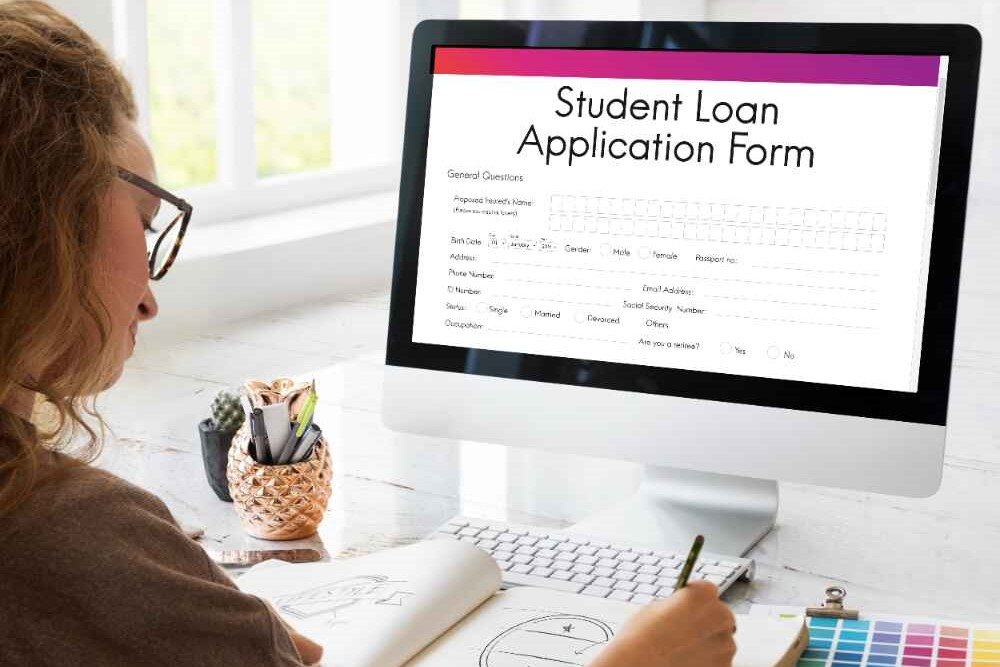How to Apply for a Student Loan?
Securing a student loan is a crucial step for many students seeking higher education. Understanding how to apply for a student loan can help ensure that the process is smooth and stress-free. Whether you need financial aid for tuition, accommodation, or other expenses, applying for a student loan is a structured process that requires careful planning. In this guide, we will walk you through everything you need to know, from understanding loan types to the final application process.
Importance of Student Loans
A student loan provides financial support for students who might not be able to afford higher education on their own. These loans help cover tuition fees, books, housing, and other expenses. With rising education costs, student loans make it possible for many students to pursue their academic goals. However, understanding the process and choosing the right loan is essential to avoid long-term financial burdens.
1. Why Student Loans Matter
Student loans enable access to higher education by covering tuition, housing, and other expenses. Without them, many students would struggle to afford college.
2. Long-Term Benefits of Student Loans
A degree can significantly increase earning potential, making student loans a valuable investment in your future.

Types of Student Loans
1. Federal Student Loans
Federal student loans are funded by the U.S. government and typically offer lower interest rates and better repayment options than private loans. These loans come with several benefits, including income-driven repayment plans and loan forgiveness programs.
Direct Subsidized Loans: These are need-based loans where the government covers the interest while you are in school. They are ideal for undergraduate students with financial need.
Direct PLUS Loans: These loans are designed for graduate students and parents of dependent undergraduate students. They require a credit check and have higher interest rates.
Direct Consolidation Loans: This option allows students to combine multiple federal loans into a single loan with a fixed interest rate, making repayment more manageable.
Private Student Loans
Private student loans are offered by banks, credit unions, and other financial institutions. They are based on credit history and may have higher interest rates. Unlike federal loans, private loans do not offer income-driven repayment plans or loan forgiveness programs.

How to Apply for a Federal Student Loan
1. Check Your Eligibility
Before applying for a student loan, determine whether you meet the eligibility requirements. Federal student loans require you to:
- Be a U.S. citizen or eligible non-citizen
- Have a valid Social Security number
- Be enrolled in an eligible degree or certificate program
- Maintain satisfactory academic progress
2. Complete the FAFSA
The Free Application for Federal Student Aid (FAFSA) is the most important step in applying for a federal student loan. Follow these steps to complete your FAFSA application:
- Visit the FAFSA website (fafsa.gov) and create an FSA ID.
- Gather necessary documents, including tax returns, bank statements, and personal identification.
- List the colleges you are applying to, as they will receive your financial aid information.
- Submit your FAFSA before the deadline to maximize your chances of receiving aid.
3. Review Your Student Aid Report (SAR)
After submitting your FAFSA, you will receive a Student Aid Report (SAR) summarizing your financial information. Carefully review it for accuracy and make any necessary corrections.
4. Receive Your Financial Aid Offer
Colleges will review your FAFSA and send you a financial aid offer, which may include grants, scholarships, and federal student loans. Compare the offers from different schools before making a decision.
5. Accept Your Student Loan
Log in to your college’s financial aid portal and accept the student loan amount you need. Remember, you do not have to accept the full loan amount if you can cover some costs through other means. First-time federal loan borrowers must complete loan entrance counseling, which helps students understand their responsibilities and repayment options.

How to Apply for a Private Student Loan
1. Choosing the Right Lender
- Compare interest rates and repayment options
- Check customer reviews and lender reputation
2. Check Credit Requirements
Unlike federal loans, private student loans often require a good credit score or a co-signer. If you do not have a strong credit history, applying with a creditworthy co-signer can help you qualify for lower interest rates.
3. Submit an Application
Once you have selected a lender, you must fill out an application online or in person. You will need to provide:
- Personal information (SSN, date of birth, contact details)
- School and enrollment details
- Income and employment information (if applicable)
- Co-signer information (if required)
4. Review and Accept Loan Terms
After applying, the lender will review your application and provide loan terms. Carefully read the interest rate, repayment options, and any fees before accepting the loan.
5. School Certification and Loan Disbursement
The lender will verify your enrollment with your school. Once approved, funds will be sent directly to your college to cover tuition and other expenses.

Tips for a Successful Student Loan Application
Apply Early: Many federal and private student loans have deadlines. Applying early ensures you receive the best possible aid package.
Borrow Only What You Need: Taking on unnecessary debt can lead to financial struggles after graduation. Borrow only the amount required to cover your essential expenses.
Understand Repayment Terms: Federal loans offer flexible repayment plans, while private loans may have stricter terms. Always review your repayment obligations before accepting a loan.
Keep Track of Loan Documents: Maintain records of your student loan agreements, repayment schedules, and lender contact information to stay organized.
Look for Scholarships and Grants: Before taking out a student loan, explore scholarship and grant opportunities, as they do not require repayment.
Conclusion
Applying for a student loan can be overwhelming, but with the right knowledge, the process becomes much easier. Whether you choose a federal or private student loan, understanding eligibility, completing the necessary paperwork, and comparing loan options are key steps to securing financial aid. Always explore grants and scholarships before borrowing, and ensure you borrow responsibly. With careful planning, your student loan can help you achieve your educational goals while minimizing future debt.
Read More: How to Choose Between a Credit and Debit Card?
FAQs (Frequently Asked Questions)
1. Difference between federal and private student loans?
Federal student loans are government-funded and offer lower interest rates, flexible repayment plans, and loan forgiveness options. Private student loans, issued by banks or credit unions, may have higher interest rates and stricter repayment terms.
2. How do I apply for a federal student loan?
To apply for a federal student loan, complete the FAFSA (Free Application for Federal Student Aid) at studentaid.gov. Your school will use this information to determine your eligibility for federal aid.
3. Do I need a co-signer for a student loan?
Federal student loans do not require a co-signer. However, private student loans may require a co-signer if you have a limited credit history or low credit score.
4. How much can I borrow in student loans?
Federal loan limits vary based on your academic year and dependency status. Private loans depend on the lender’s terms, your creditworthiness, and the cost of attendance.
5. When do I have to start repaying my student loan?
For most federal student loans, repayment begins six months after graduation or dropping below half-time enrollment. Private loans may have different repayment terms, so check with your lender.







